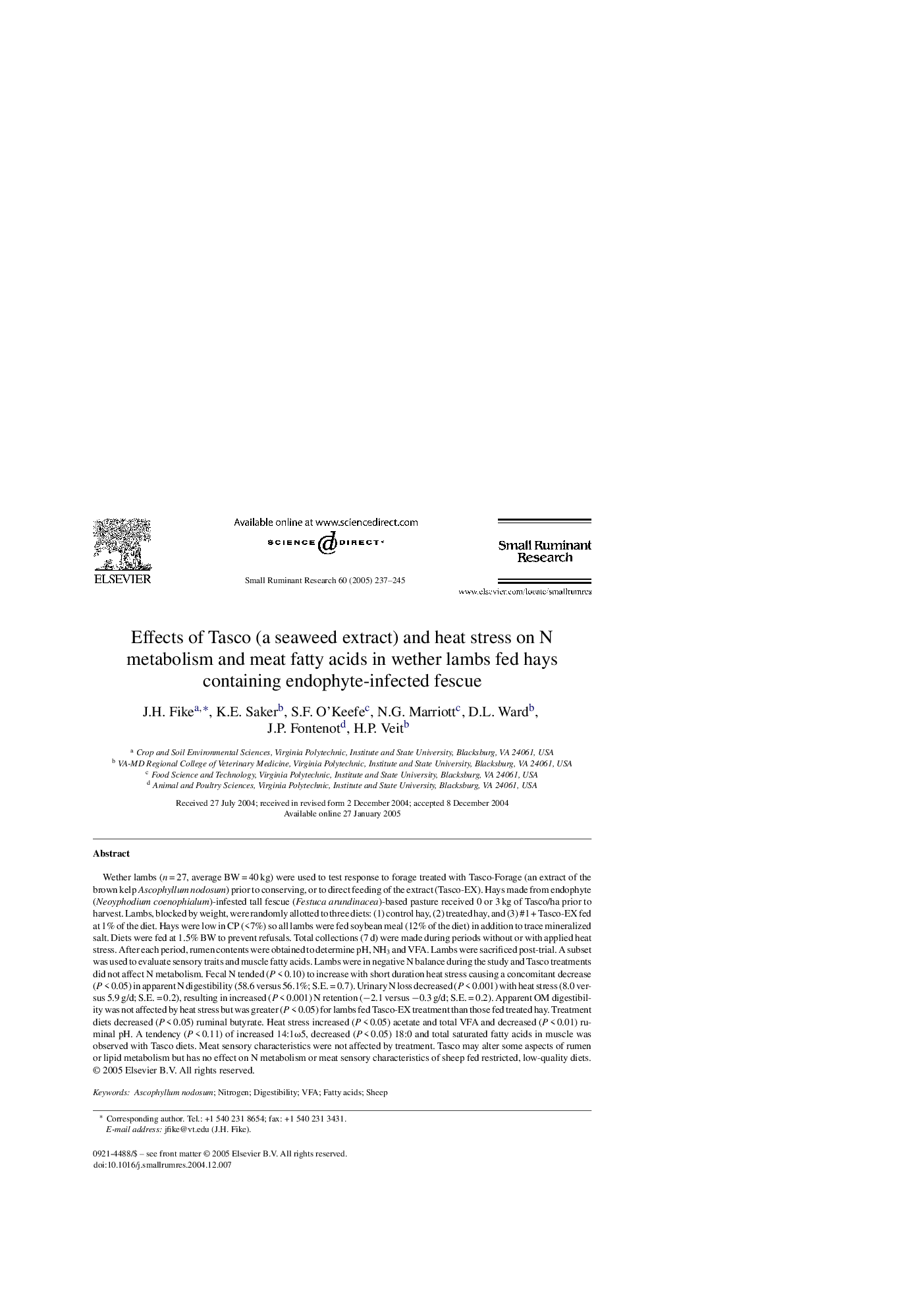| Article ID | Journal | Published Year | Pages | File Type |
|---|---|---|---|---|
| 8986670 | Small Ruminant Research | 2005 | 9 Pages |
Abstract
Wether lambs (n = 27, average BW = 40 kg) were used to test response to forage treated with Tasco-Forage (an extract of the brown kelp Ascophyllum nodosum) prior to conserving, or to direct feeding of the extract (Tasco-EX). Hays made from endophyte (Neoyphodium coenophialum)-infested tall fescue (Festuca arundinacea)-based pasture received 0 or 3 kg of Tasco/ha prior to harvest. Lambs, blocked by weight, were randomly allotted to three diets: (1) control hay, (2) treated hay, and (3) #1 + Tasco-EX fed at 1% of the diet. Hays were low in CP (<7%) so all lambs were fed soybean meal (12% of the diet) in addition to trace mineralized salt. Diets were fed at 1.5% BW to prevent refusals. Total collections (7 d) were made during periods without or with applied heat stress. After each period, rumen contents were obtained to determine pH, NH3 and VFA. Lambs were sacrificed post-trial. A subset was used to evaluate sensory traits and muscle fatty acids. Lambs were in negative N balance during the study and Tasco treatments did not affect N metabolism. Fecal N tended (P < 0.10) to increase with short duration heat stress causing a concomitant decrease (P < 0.05) in apparent N digestibility (58.6 versus 56.1%; S.E. = 0.7). Urinary N loss decreased (P < 0.001) with heat stress (8.0 versus 5.9 g/d; S.E. = 0.2), resulting in increased (P < 0.001) N retention (â2.1 versus â0.3 g/d; S.E. = 0.2). Apparent OM digestibility was not affected by heat stress but was greater (P < 0.05) for lambs fed Tasco-EX treatment than those fed treated hay. Treatment diets decreased (P < 0.05) ruminal butyrate. Heat stress increased (P < 0.05) acetate and total VFA and decreased (P < 0.01) ruminal pH. A tendency (P < 0.11) of increased 14:1Ï5, decreased (P < 0.05) 18:0 and total saturated fatty acids in muscle was observed with Tasco diets. Meat sensory characteristics were not affected by treatment. Tasco may alter some aspects of rumen or lipid metabolism but has no effect on N metabolism or meat sensory characteristics of sheep fed restricted, low-quality diets.
Related Topics
Life Sciences
Agricultural and Biological Sciences
Animal Science and Zoology
Authors
J.H. Fike, K.E. Saker, S.F. O'Keefe, N.G. Marriott, D.L. Ward, J.P. Fontenot, H.P. Veit,
